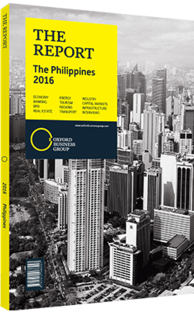Edgar “Injap” Sia II, Chairman and CEO, DoubleDragon Properties: Interview

Interview: Edgar “Injap” Sia II
What are the principal drivers behind the decentralisation of modern retail into provincial areas?
EDGAR INJAP SIA II: It is currently easy for large retailers to raise funding at reasonable cost due to a high level of liquidity, especially within the local banking network. As the market in Tier one cities becomes saturated, branded supermarket chains, fast food chains and even banks are compelled to expand into Tier two and Tier three provincial cities in order to continue to grow. These businesses have easy access to capital that will transform the traditional retail setting currently existing in provincial areas into a modern retail environment. We are positioning City Mall to be in the forefront of this once in a lifetime transformation, as it provides the right environment for modern retail to thrive.
Given the multiplication of malls and retail space, how are developers aligning projects to meet their clients’ needs?
SIA: I believe that the transformation of the retail industry in provincial areas will be a replication of what happened to the fast food industry in the 1990s. A few decades ago, the strongest fast food players in the provinces were always homegrown brands. Over the years, they have slowly been replaced by branded fast food chains which have stronger brand recall and higher operational efficiency. The smaller players don’t have that kind of leverage. Similarly, in the supermarket industry, as the larger branded supermarkets put up shop, the locally owned markets will start to lose their pricing advantage. I anticipate that in a few years from now there will be only two surviving business models; a community mall and a destination mall. The community mall will offer the convenience of being located at the heart of each community, while the destination mall will provide a variety of retail options outside the city centre; this latter option will be ideal for shoppers who have more time to spend when making their purchases.
What value proposition do regions outside of Metro Manila offer for the expansion of malls and other retail developments?
SIA: The lack of available land in and around major urban areas have in some ways forced mall developers to look to other markets, particularly the provincial areas where they are still able to acquire property at relatively low prices. Although you will probably see less foot traffic in the provinces than you would in a regular mall in Metro Manila, the lower cost of land and labour compensate for lower rental rates developers charge in these areas.
The ability to acquire and build on land at relatively little expense provides a larger upside in terms of property appreciation and return on investment for developers. There is also far less competition, if any, in these areas compared to Metro Manila.
How has retail liberalisation shifted the domestic market, and what role has franchising played in the introduction and penetration of brands?
SIA: Retail liberalisation has promoted healthy competition among domestic brands. It has motivated local business owners to improve their product offering in order to compete with international brands. It has even helped to develop a domestic market for some Philippine-produced products, which were previously only export driven. In a lot of ways, retail liberalisation has made consumers considerably more sophisticated in their tastes, which in turn has forced suppliers to provide better quality products. Franchising is a perfect example of this. The very core of franchising is in offering a consistently high-quality product, backed by thorough systems and guidelines for best business practices, in order to ensure success in different markets. This has caused competing smaller brands to either improve their businesses or go bust, which is why there is a clear penetration of brands heightening the barriers of entry for new players.
You have reached the limit of premium articles you can view for free.
Choose from the options below to purchase print or digital editions of our Reports. You can also purchase a website subscription giving you unlimited access to all of our Reports online for 12 months.
If you have already purchased this Report or have a website subscription, please login to continue.

